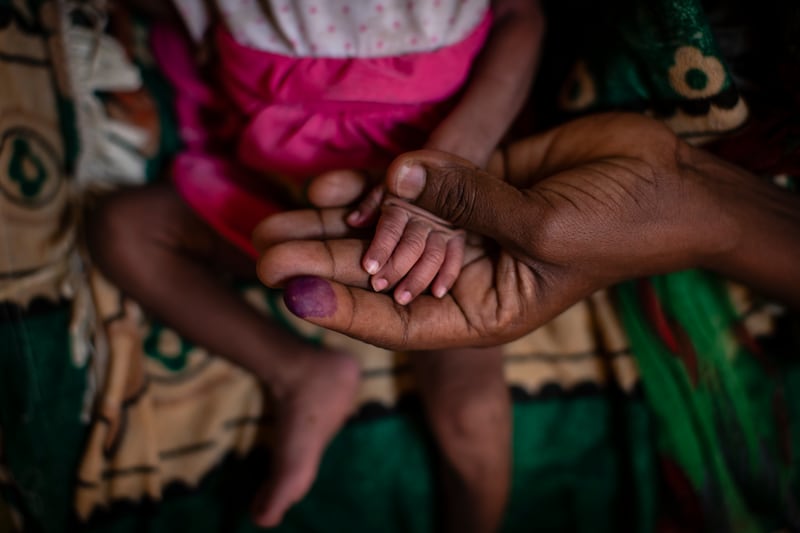The world’s gravest humanitarian crisis is currently unfolding in Tigray, the northern region of Ethiopia.
Tigray is at the center of an ongoing civil war between the Tigrayan resistance government and the Ethiopian federal government, reports BBC. Living conditions in the region have quickly deteriorated and are expected to continue deteriorating.
“Ignorance is dangerous. Denial is unforgivable,” U.N. Emergency Relief Coordinator Mark Lowcock told the U.N. Security Council this week when speaking about the crisis in Tigray, per CBS News.
“The number of people in famine conditions ... is higher than anywhere in the world, at any moment” since 2011, Lowcock said via Reuters.
What to know about the war in Tigray, northern Ethiopia
The Tigrayan People’s Liberation Front — that formerly led the central government and then controlled Tigray — held parliamentary elections in September. The action directly defied Ethiopian Prime Minister Abiy Ahmed’s decision to postpone all elections due to the COVID-19 pandemic, The New York Times reported. Soon after, fighting began in November 2020 between the Tigrayan People’s Liberation Front and the Ethiopian federal government.
The war escalated when Ethiopia’s ally and neighbor, Eritrea, sent troops across the border to aid Ethiopian federal troops.
Regionally, Ethiopia is the second-most populous country in Africa with 115 million people. The Tigray war threatens to destabilize the entire Horn of Africa region, according to The New York Times.
Since the fighting began last November, accusations of atrocities have come from all sides, including ethnic cleansing of Tigrayans, systematic rape of women and girls and the use of starvation as a weapon of war, reported CBS News.
Tigray is currently divided, with each of the three militaries occupying one-third of the region, reported BBC. For months, Ethiopia has said that Eritrean troops “will definitely leave soon,” but they still remain in Tigray.
Seven months later, the war has become a humanitarian crisis for the people of Tigray.
What is the humanitarian crisis in the region?
Tigray is facing severe famine. Before the conflict erupted, about 1 million people in Tigray relied on humanitarian aid for food. Now, about 5.2 million people in the region need food aid — about 91% of the population, reports The Independent.
The conflict has destroyed aid delivery systems used before the war, said the BBC.
Evaluating conditions on the ground remains difficult, but a recent U.N. report shared via BBC assessed that:
- At least 353,000 people are in the “catastrophe” phase, the most severe.
- About 1.8 million people are in the “emergency” phase, the second-most severe.
Ethiopia has disputed these findings, said The Independent.
Humanitarian agencies have been slow to respond, according to BBC. Estimates say that out of the 5.2 million people in need of aid, only 13% are receiving aid. At this point, deaths are considered unavoidable. BBC reported that “realistic” estimates fear about 300,000 child deaths.
Unfortunately, all estimates err on the conservative side due to limited data.
Why is the crisis so terrible? What caused the famine?
Tigray is not in a drought and the locust swarms that damaged crops last year have left. So what is causing the drought? According to CBS News, the region’s famine is “man-made” from “cascading effects of conflict.”
Large areas of farmland are not being cultivated due to a shortage of seeds, oxen and/or fertilizer. Ethiopian and Eritrean militaries have blocked key roads into the region, according to BBC.
Soldiers have threatened to punish farmers if they are caught farming, forcing farmers to farm at night with a scout to keep watch or not farm at all, said BBC. Eritrean soldiers have even burned crops as they pillaged the Tigrayan region under their control.
Additionally, the fear of sexual violence has kept women and girls in hiding, preventing them from seeking food, said BBC. And if Tigray does not have a harvest later this year, the people will rely on food aid or starve.
Humanitarian aid has been ineffective due to the Ethiopian and Eritrean governments refusing to cooperate with aid organizations, said the BBC. The joint forces refuse to allow aid to enter the portion of Tigray controlled by the Tigrayan People’s Liberation Front.
On all sides of the conflict, soldiers have stolen the food aid sent by humanitarian organizations, keeping aid from civilians, reported BBC.
“Aid workers have been killed, interrogated, beaten, blocked from taking aid to the starving and suffering and told not to come back,” says Lowcack, the highest-level U.N. humanitarian official, per CBS News.
The situation is nearing a “tipping point,” said CBS News.
What is being done to help people in Tigray?
To help the Tigrayan people, progress needs to come in three areas: increased funding, unimpeded humanitarian access for those on the ground, and a faster pace of aid delivery, says CBS News.
International authorities are pushing for a “famine prevention cease-fire” where all hostilities would cease in order to protect civilians from violence, said BBC.
What can you do to help?
Helping the people of Tigray has proven to be incredibly difficult — for those on the ground and those far away. However, there are three ways for people to contribute to mitigating the crisis:
- Donating to the humanitarian organizations on the ground allows them to continue operating even under difficult circumstances, says Global Giving. The United Nations High Commissioner for Refugees is one such group. Global Giving also provides a list of organizations working in the region.
- Contacting politicians involved in discussing the crisis in Tigray can encourage progress, according to Amnesty International, which provides one such contact point.
- Sharing factual information about the crisis in Tigray can bring awareness to the issue and encourage others to do the same, reports the activist group Stand With Tigray.

